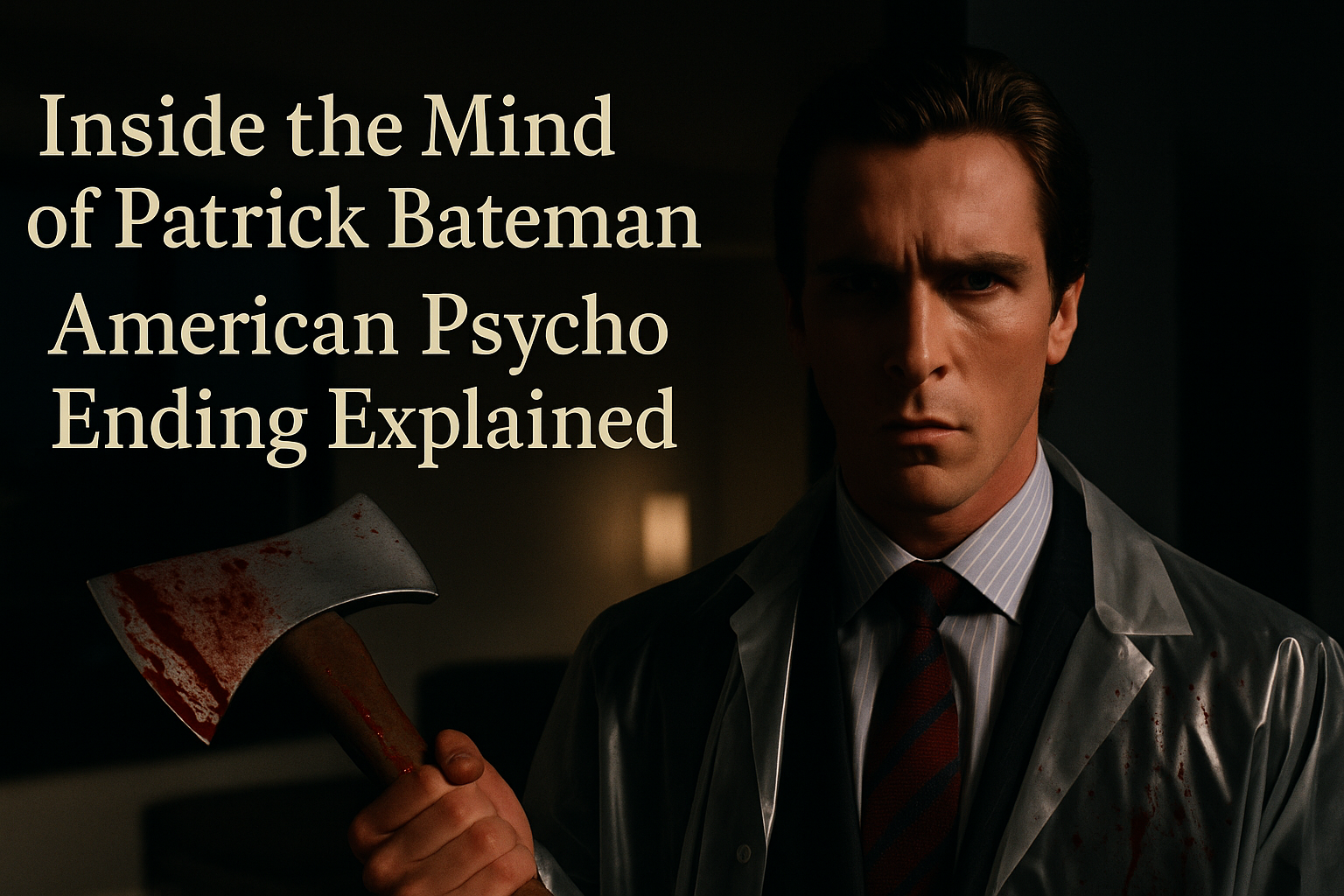
"American Psycho" (2000), directed by Mary Harron and based on Bret Easton Ellis’s gripping novel, remains one of cinema's most enigmatic and debated thrillers.
Christian Bale’s unforgettable portrayal of Patrick Bateman has sparked countless discussions, particularly about the film’s puzzling conclusion. In this article, we'll clearly break down the American Psycho ending explained and unravel its many layers.
If you’re fascinated by psychological storytelling and sharp cultural observations—as in American Psycho—you may also enjoy reading our analysis of the best streaming apps in 2025.
Plot Overview (Spoiler-Free)
Patrick Bateman, portrayed brilliantly by Christian Bale, is an affluent Wall Street investment banker living the dream of 1980s America—wealthy, fashionable, and successful. Yet, beneath this polished appearance lies a deeply disturbed individual. Bateman struggles with increasingly violent and horrific urges, seemingly transforming into a ruthless serial killer. But is everything as it seems?
What Happens in the Final Act?
As the film nears its conclusion, Bateman spirals into panic and paranoia, desperately confessing his violent crimes via voicemail to his lawyer. However, when he confronts his lawyer the next day, he's met with laughter and disbelief. Shockingly, Bateman also encounters Paul Allen—a character he had supposedly murdered—alive. This twist leaves audiences questioning everything they’ve seen.
The Ending Scene Explained: American Psycho Ending Explained Clearly
The climactic moment sees Bateman in shock as his lawyer brushes off his gruesome confession as a joke or mistaken identity. Bateman, distressed and confused, concludes the film with a chilling realization, stating, "This confession has meant nothing." He grasps the unsettling truth—his brutal acts, real or imagined, have no consequence or recognition in a superficial society.
Did Patrick Bateman Actually Kill Anyone? – American Psycho Ending Explained
The film intentionally leaves room for interpretation, fueling debates among viewers and critics. Let’s explore three prominent theories:
Interpretation 1: The Murders Were Real
Supporters of this theory point to vivid evidence: bloody sheets, Bateman’s detailed confessions, and missing people. The reason nobody cares? Society’s elite are indifferent and insulated from consequences, highlighting a critique of wealth and power.
Interpretation 2: The Murders Were Fantasy
Others believe Bateman’s violent episodes are purely hallucinations driven by mental instability. Surreal moments, like an ATM instructing him to feed it a cat, suggest Bateman’s psychosis, projecting repressed rage and narcissism through imagined violence.
Interpretation 3: Deliberate Ambiguity
Many viewers feel director Mary Harron purposefully blurred reality and delusion, intentionally creating uncertainty. This ambiguity emphasizes the film’s message—Bateman’s guilt or innocence doesn’t matter in a society indifferent to morality.
Themes in the Ending: American Psycho Ending Explained
Capitalism & Detachment:
The ending critiques the shallow obsession with material success, highlighting how Bateman and his peers have become interchangeable, anonymous figures driven by superficial desires.
Insanity & Identity Crisis:
Bateman’s deteriorating mental state symbolizes a loss of personal identity, emphasizing how societal pressures can lead individuals into profound psychological breakdowns.
Societal Apathy:
Bateman’s ignored confession exposes society's indifference to human suffering and violence, underscoring the emptiness behind the facade of affluence.
Symbolism in the Final Scene
The final scene, set in an anonymous boardroom, represents conformity and facelessness, underscoring the meaningless pursuit of status. Bateman’s vacant stare symbolizes the emptiness and futility he feels, trapped in an endless loop of ignored confessions.
Differences From the Book
Bret Easton Ellis’s novel is considerably darker and more graphic. Its ending line—"This is not an exit"—signifies perpetual entrapment. The film adaptation reduces explicit violence while deepening psychological themes, creating a more nuanced exploration of existential dread.
Director & Cast Commentary
Director Mary Harron intended to provoke thought with an ambiguous ending, inviting personal interpretations. Christian Bale emphasized the duality within Bateman’s character, reinforcing the unsettling blend of charisma and psychopathy central to the film's appeal.
Fan Theories & Cultural Impact
"American Psycho" continues to inspire extensive debates: Was Bateman's violence real or imaginary? Did society ignore his crimes due to privilege? The film has cemented its place as a culturally significant piece, influencing discussions around capitalism, identity, and morality.
American Psycho Ending Explained
Ultimately, the "American Psycho" ending explained reveals a powerful critique of society’s emptiness and superficiality. It leaves viewers unsettled—not because of Bateman’s potential violence—but because society is indifferent, incapable of recognizing or addressing profound moral corruption. It remains an essential film for anyone intrigued by psychological thrillers and societal critiques.
Want tips to manage how you consume media subscription-wise? See our guide on how to split, share & track subscriptions with ease.
FAQs
1. Did Patrick Bateman really kill Paul Allen?
It's deliberately unclear—both possibilities are supported by the film.
2. What does the ending monologue mean?
It underscores Bateman’s realization that society is indifferent to his crimes and identity.
3. Why doesn’t anyone believe Bateman’s confession?
Society's superficiality makes people dismiss his confession as a joke or mistaken identity.
4. Was everything just in his head?
The film purposely leaves this ambiguous, allowing personal interpretation.
5. What does “This is not an exit” signify?
It symbolizes Bateman’s entrapment within his psychological and existential nightmare.




-%20Download%20and%20Watch%20Anywhere-min.png)